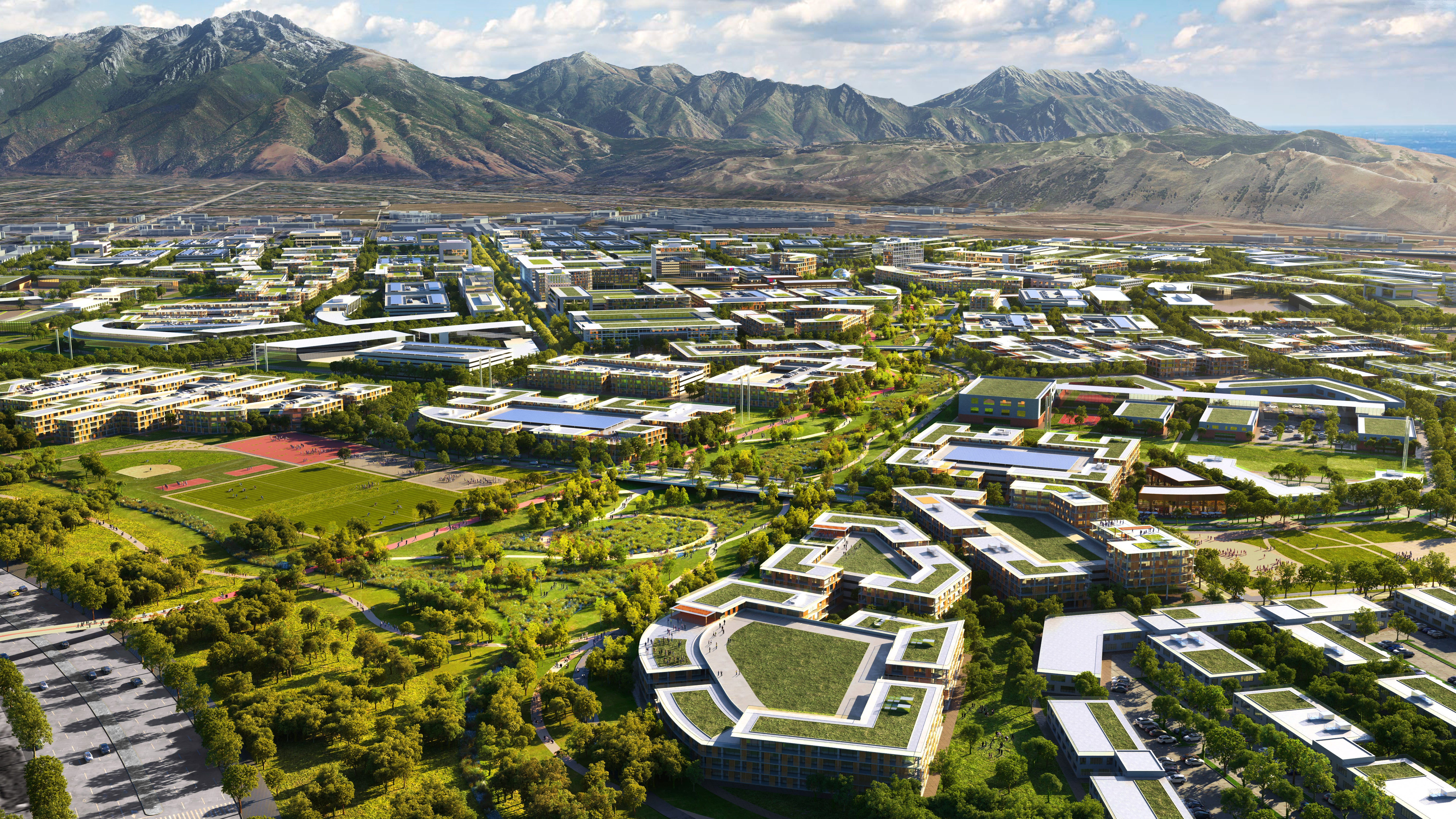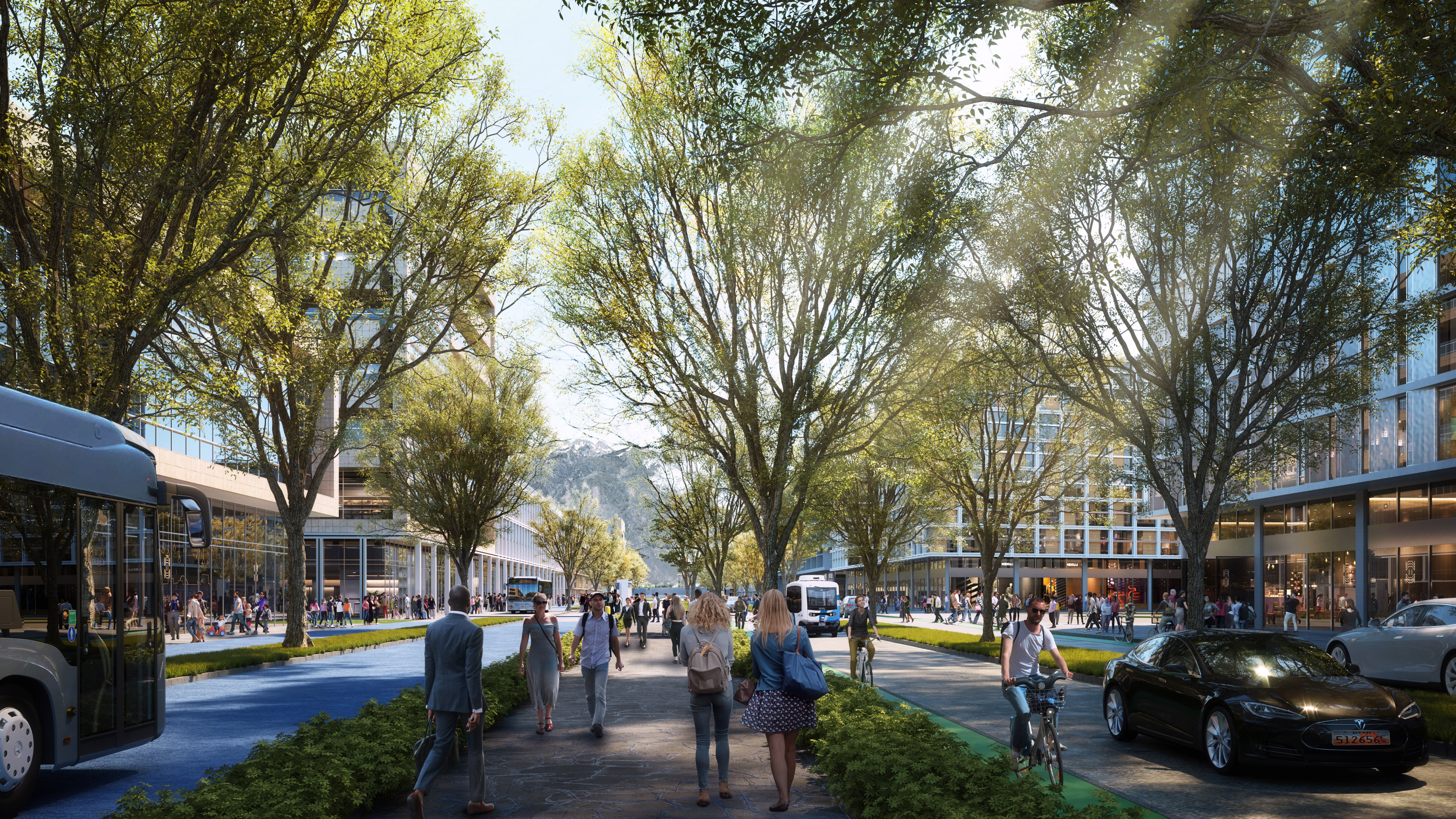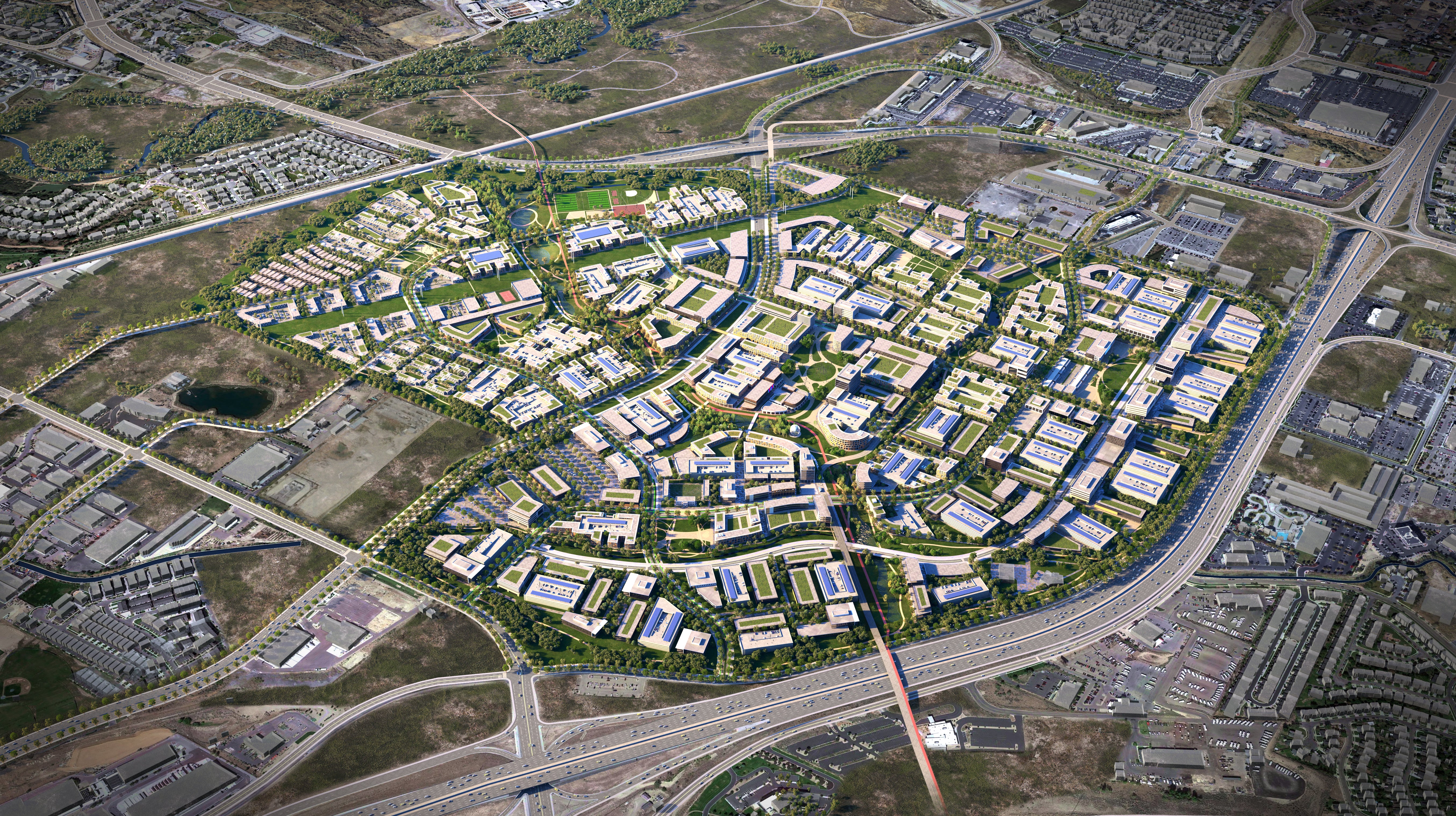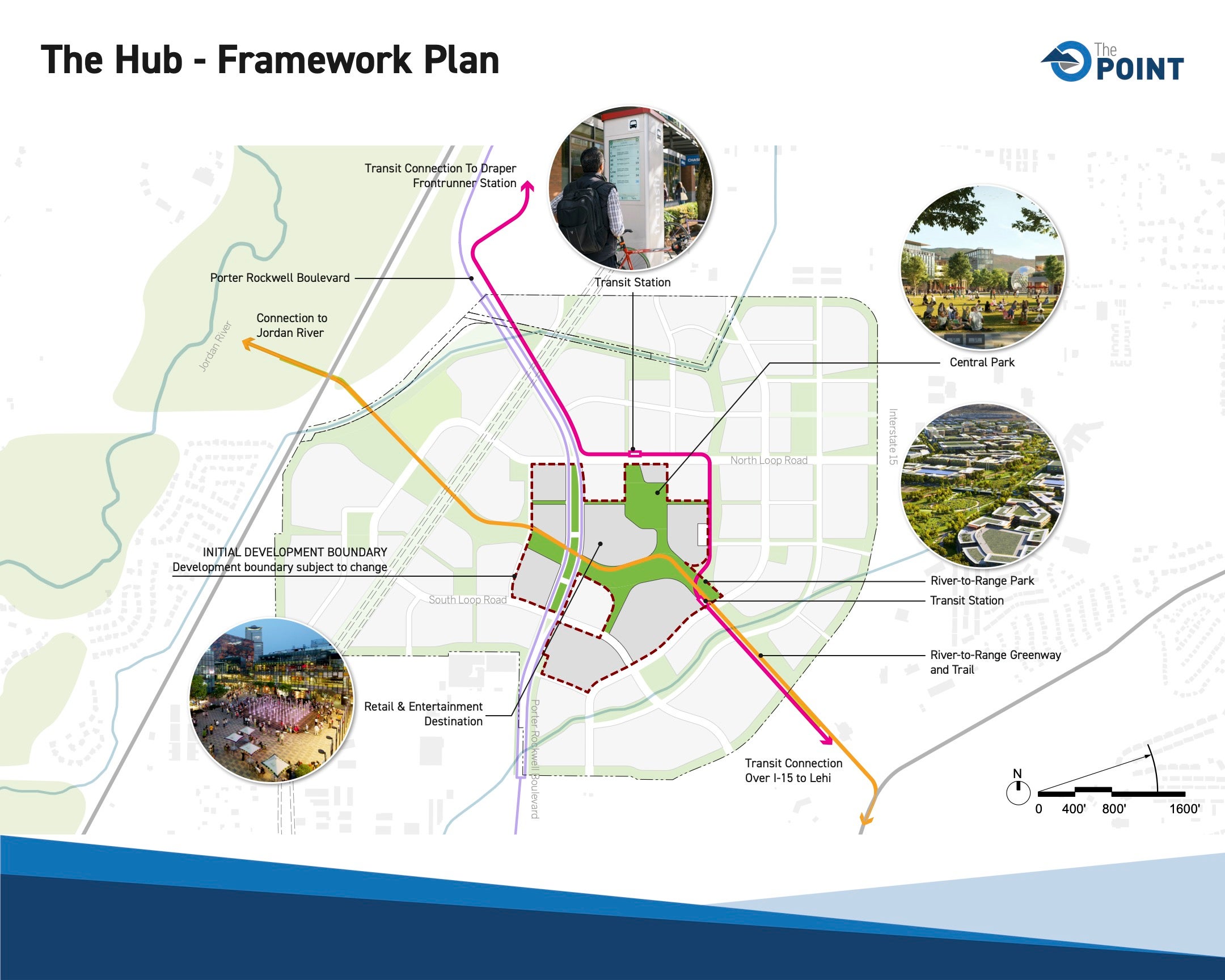Utah is building a ‘15-minute city’ on the site of a former prison
The utopian vision of a city where everything is a short walk or bike ride away is coming to Utah – but can it work, asks climate reporter Ethan Freedman

Three out of four Americans believe it’s “better for the environment if houses are built farther apart”, according to a recent survey by the polling group YouGov.
Three out of every four Americans are, for the most part, very wrong.
City living is far more sustainable than suburban life in part because walking, biking and public transportation keep people out of cars. A 2014 study from UC Berkeley found that the average carbon footprint of city households was about 10 metric tonnes of planet-heating carbon dioxide (CO2) less per year than homes in the suburbs.
In Utah, plans are underway to take this eco-friendliness to the next level with a “15-minute city”. The concept, developed by urban planner Carlos Moreno, describes neighbourhoods where residents can reach everything they need – work, school, shopping, entertainment – with a short walk or bike ride.
Developers of the project, called “The Point”, aim to complete a downtown area with retail, commercial space and housing in the next five to 10 years.
The plan is then to expand to 10,000 homes and apartments over 600 acres along the suburban stretch between Salt Lake City and Provo, interspersing offices, shops, parks and entertainment in a walkable, bike-friendly, public transport-driven community.
“There are cities across the country and across the world that are dealing with urbanisation, they’re dealing with growth, they’re dealing with finite resources,” Scott Cuthbertson, chief operating officer of the project, told The Independent.
“We think that the model that we’re using, the approach we’re taking at The Point, can demonstrate how to be responsible in doing that.”
The Point is being built on the former site of the Utah State Prison, where notorious serial killer Ted Bundy was held back in the 1970s. The Salt Lake City-Provo region has seen rapid population growth in the past few decades, so public officials thought the space might be put to better use.
Since the land is state-owned, plans for the new development have incorporated feedback from locals, who voiced an interest in sustainability and public space, Cuthbertson said.
“If this were a privately owned land, it would be sold off to the highest bidder and likely what you would see is a lot of tract housing,” he said.
Instead of traditional suburban sprawl dominated by roads, the future development will be connected by walking and biking paths – and potentially a self-driving shuttle – to transport people around.

With all those alternative transport options, people won’t need cars on a daily basis, assuming they work or go to school on-site. In fact, Cuthbertson envisions people only needing cars to travel outside the new city.
That doesn’t mean The Point can completely abandon cars, however. The development will have some roads that connect to neighbouring communities, and some shops and offices in The Point will still have a lot of parking spaces.
To entice developers to build, there needs to be some parking, at least initially, Cuthbertson says, since people still mostly get around in their cars.
But the planners hope to limit the amount of parking they build, and once other transport is up and running at The Point, repurpose some of the parking garages into new uses.

These challenges underscore how difficult it may be to undo decades of car-centric planning with one new concept. And Utah is also facing long-term environmental and climate challenges that no individual development can fix, especially when it comes to drought.
A 20-year “megadrought” fuelled by the climate crisis has left the western US at its driest in at least 1,200 years, according to one study. More than half of Utah, including the land where The Point is planned, is under “extreme drought” conditions, according to the US government’s drought monitor.
Worsening climate impacts are expected to make drought conditions in the region more frequent and severe, according to the UN’s latest climate science assessment.
Cuthbertson says that the planners have confirmed there is enough water available to support the new community, and are exploring “water-recycling” strategies.

But the drought also brings another risk to the region. The Great Salt Lake, which gives the state’s largest city its name, is shrinking. The lake is about half the size it once was, with water levels at a record low this year.
One of the greatest concerns is that as the lake shrinks, wind could kick up arsenic-laced dust from its bed and create long-term health problems for local people, Reuters reported in July.
Northern Utah’s population is also continuing to grow. One report found that the state could add another 2.2million people in the next four decades, many of them in the Salt Lake City - Provo area. And as those people move in, they’re going to need a place to live.
“We're building open space, green space, we're bringing density. We're using mass transit, we're reducing automobile dependence,” Cuthbertson says.
“We're looking at doing things differently on this project than what you've seen in the past.”
Join our commenting forum
Join thought-provoking conversations, follow other Independent readers and see their replies
Comments


Bookmark popover
Removed from bookmarks